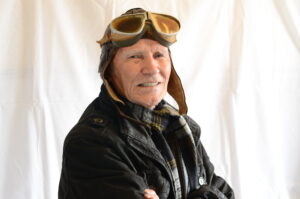Good Pilots Are Getting Harder Find
The U.S. Air Force has 723 fighter jet pilot openings, according to a report issued earlier this year. Air Force Secretary Deborah James indicated in an interview with The Washington Post, that the shortage is already a crisis in need of a pay-boost.
With the Air Force cutting readiness training and not increasing pay enough, fewer pilots are incentivized adequately to stay in the Air Force after their 10-year initial service contract ends.
In a recent presentation to the National Air Transportation Association, Chris Hart, chairman of the National Transportation Safety Board said he was concerned about the lack of former military pilots feeding the commercial and general aviation demand with exceptionally trained personnel. The pilot shortage is going to become a real issue, not just in the United States, but around the world.
Airlines are thinking strategically about building their pilot pipeline. Many major airlines already own or have affiliation with regional carriers that feed their open first officer and captain positions. Those who don’t are considering it. They have good reason.
More than 30,000 pilots — or half the current total of 60,222 at 10 large U.S. airlines, UPS, and FedEx — will reach age 65 by 2026, according to data compiled by Kit Darby, president of KitDarby.com Aviation Consulting LLC.

With expected growth in the airline industry, the current requirements for unmanned aerial vehicles (or drones) to be operated by licensed pilots, and the projected global growth of the general aviation fleet, the need for an increasing number of pilots is here now.
Asian operators regularly recruit American or European-trained pilots to fly their corporate jets, as the pool of native pilots with experience is small. We’ve heard of corporate pilots earning $400,000 or more per year, with a base in Hong Kong, Shanghai or Singapore. Other growing regions also are competing for a shrinking talent pool.
While the Aircraft Owners and Pilots Association (AOPA) is helping older pilots get back in the cockpit through its Rusty Pilots program and reduced medical and age restrictions, the real need is to produce interest in younger potential aviators who will fly aircraft we haven’t even imagined yet.
The biggest inhibitor for young men and women becoming pilots is not necessarily lack of interest, but lack of funds. In a generation already crippled by student loans, there is little appeal in signing up for another $65,000 in flight training to acquire a $20,000 to $30,000 per year job, even with the added incentive of seeing the world and of attaining a good six-figure job in the future.
What can we do to ease the pilot shortage?
- Petition our Congressmen and Senators to make sure our military pilots and flight support crews are getting competitive pay for their service.
- Work together as a global aviation industry to attract the next generation of aviators, mechanics, and engineers. There are organizations that are trying to do so that could use a corporate boost. Phoenix Arising Aviation Academy in Austin is one of them.
- Find innovative solutions to pilot training expenses. There must be technological advances to help train pilots that we can employ to mitigate the costs.
In the meantime, the flight departments that will be well positioned to hire the best pilots are those that can offer competitive compensation, a good work environment, modern equipment, and a high quality of life balance (with the ability to have time off in rotation, especially in business aviation jobs, which tend to have more ad-hoc trips). Be prepared to be flexible to have good pilots.

